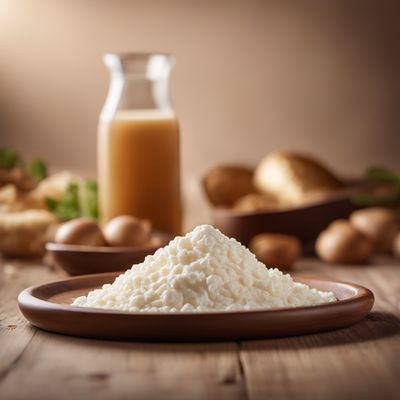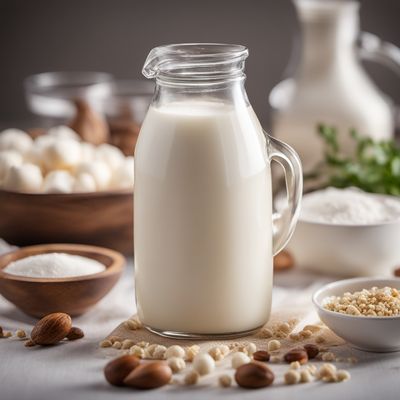
Ingredient
Camel milk fat
The Creamy Elixir from the Desert's Majestic Beasts
Camel milk fat is derived from the milk of camels, which is known for its high fat content. It has a creamy consistency and a distinct flavor that is slightly sweet and nutty. This ingredient is often used in traditional Middle Eastern and North African cuisines to enhance the richness of dishes.
Origins and history
Camel milk has been consumed for centuries in regions where camels are prevalent, such as the Middle East, North Africa, and parts of Asia. The fat content of camel milk makes it an important ingredient in traditional recipes, providing a creamy texture and enhancing the flavor of dishes.
Nutritional information
Camel milk fat is a good source of healthy fats, vitamins, and minerals. It is lower in lactose compared to cow's milk, making it a suitable option for individuals with lactose intolerance. However, it is high in calories and should be consumed in moderation.
How to select
When selecting camel milk fat, choose a product that is fresh and free from any off-putting odors. Look for a creamy consistency and a rich, golden color. It is best to purchase camel milk fat from reputable sources or specialty stores that specialize in Middle Eastern or North African products.
Storage recommendations
To maintain the freshness and quality of camel milk fat, store it in a sealed container in the refrigerator. It can also be frozen for longer-term storage. Before using, allow the fat to come to room temperature to ensure a smooth texture and optimal flavor.
Preparation tips
Camel milk fat can be used in a variety of culinary applications, such as in desserts, sauces, and traditional Middle Eastern dishes. It adds richness and depth of flavor to dishes like rice pudding, curries, and pastries.
Culinary uses
Camel milk fat is commonly used in Middle Eastern and North African cuisines. It is a key ingredient in dishes like camel milk ice cream, camel milk caramel, and camel milk-based sauces.
Availability
Camel milk fat is commonly available in regions where camels are prevalent, such as the Middle East, North Africa, and parts of Asia.


